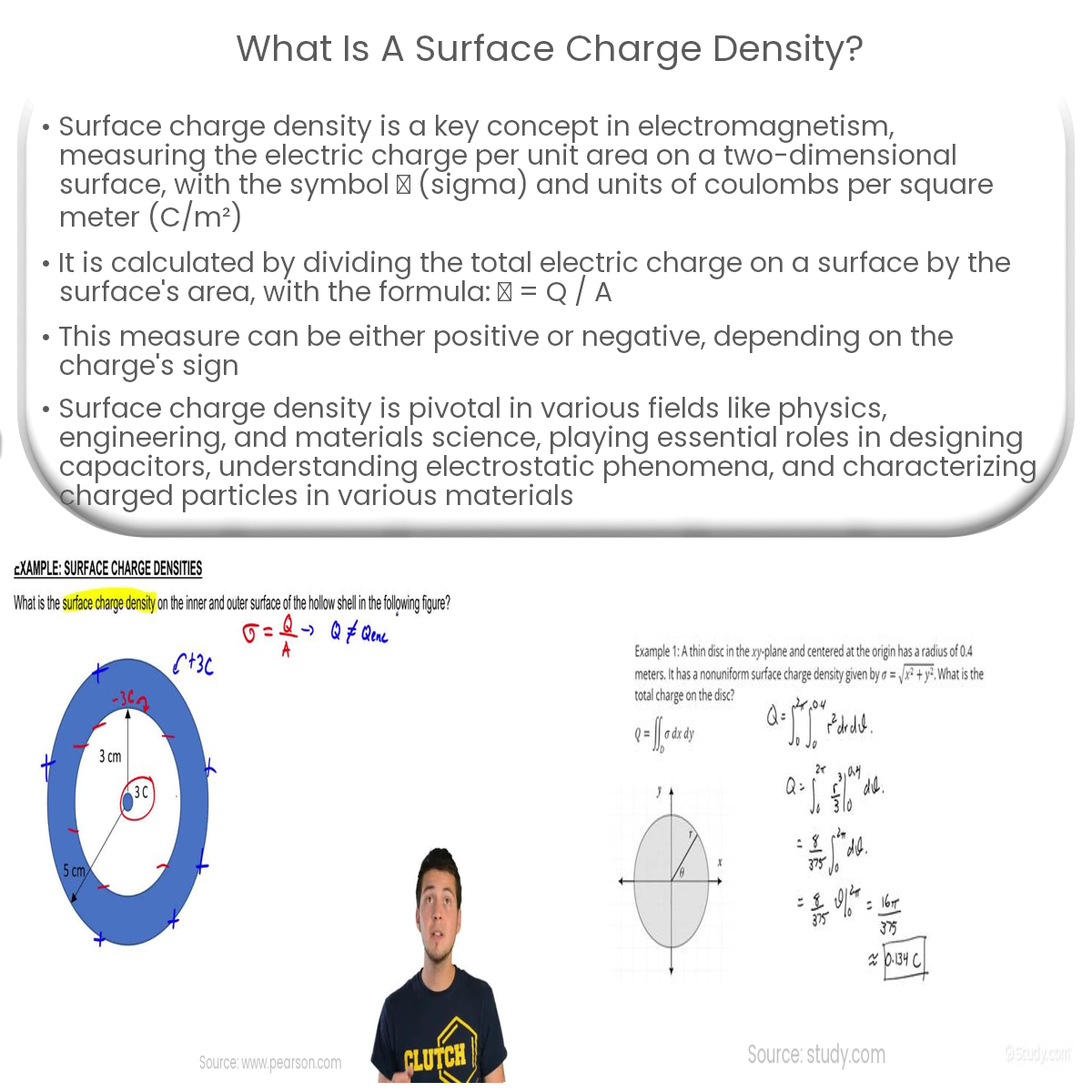Surface charge density measures electric charge per unit area on a surface and is vital for understanding electric fields and designing electronic devices.
Introduction to Surface Charge Density
Surface charge density is a crucial concept in electromagnetism, playing an essential role in understanding electric fields and designing electronic devices. In this article, we will discuss the definition, calculation, and applications of surface charge density.
Definition of Surface Charge Density
Surface charge density, denoted by the symbol σ (sigma), is the measure of the electric charge per unit area on a two-dimensional surface. It is used when electric charge is distributed uniformly across a surface, and is expressed in units of coulombs per square meter (C/m2).
Calculating Surface Charge Density
To calculate surface charge density, divide the total electric charge present on a surface by the surface’s area. The formula for surface charge density is:
σ = Q / A
Where:
- σ represents the surface charge density (C/m2)
- Q is the total electric charge (C)
- A is the surface area (m2)
Note that the charge density can be positive or negative, depending on the charge’s sign.
Applications of Surface Charge Density
Surface charge density plays a vital role in various fields, including physics, engineering, and materials science. Some notable applications include:
- Capacitors: Surface charge density is crucial in the design and analysis of capacitors, which store electrical energy by accumulating charge on their surfaces. The capacitance of a capacitor is directly related to its surface charge density and the distance between the charged plates.
- Electrostatics: Surface charge density is an essential factor in determining the electric field around charged objects. It helps in understanding electrostatic phenomena such as electric field lines, electric potential, and electric force.
- Materials science: Surface charge density is vital for characterizing and understanding the behavior of charged particles in various materials, including conductors, insulators, and semiconductors.
In conclusion, surface charge density is a fundamental concept in electromagnetism, measuring the electric charge per unit area on a two-dimensional surface. It is essential for understanding electric fields, designing electronic devices, and studying the properties of materials.


